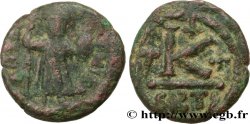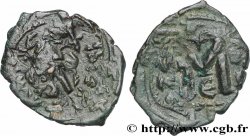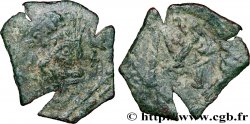v28_0476 - CONSTANS II Hexagramme
MONNAIES 28 (2007)
Starting price : 400.00 €
Estimate : 650.00 €
Realised price : 680.00 €
Number of bids : 4
Maximum bid : 900.00 €
Starting price : 400.00 €
Estimate : 650.00 €
Realised price : 680.00 €
Number of bids : 4
Maximum bid : 900.00 €
Type : Hexagramme
Date: c. 654-658
Mint name / Town : Constantinople
Metal : silver
Millesimal fineness : 800 ‰
Diameter : 21 mm
Orientation dies : 6 h.
Weight : 5,20 g.
Rarity : R1
Coments on the condition:
Flan irrégulier, légèrement ovale. Faiblesse de frappe sur la légende au droit. Très beaux portraits. Jolie patine de collection ancienne
Catalogue references :
Obverse
Obverse legend : D N CONSTANTINVS C CONSTAN.
Obverse description : Buste barbu et couronné de Constans II et de Constantin IV imberbe de face, vêtu de la chlamyde.
Obverse translation : “Domini Nostri Constantinus et Constans”, (Nos seigneurs Constantin (= Constans II) et Constantin IV).
Reverse
Reverse legend : DEYS ADIYTA .RMANIS/ -|B.
Reverse description : Croix potencée sur un globe posée sur trois degrés.
Reverse translation : “Deus Adiuta Romanis”, (Dieu à l'aide des romains).
Commentary
Poids léger. ORMANIS au lieu de ROMANIS. Exemplaire de qualité exceptionnelle pour un hexagramme qui est souvent mal frappé et mal conservé.
Lightweight. ORMANIS instead of ROMANIS. Exceptional quality example for a hexagram that is often poorly struck and poorly preserved.
Lightweight. ORMANIS instead of ROMANIS. Exceptional quality example for a hexagram that is often poorly struck and poorly preserved.







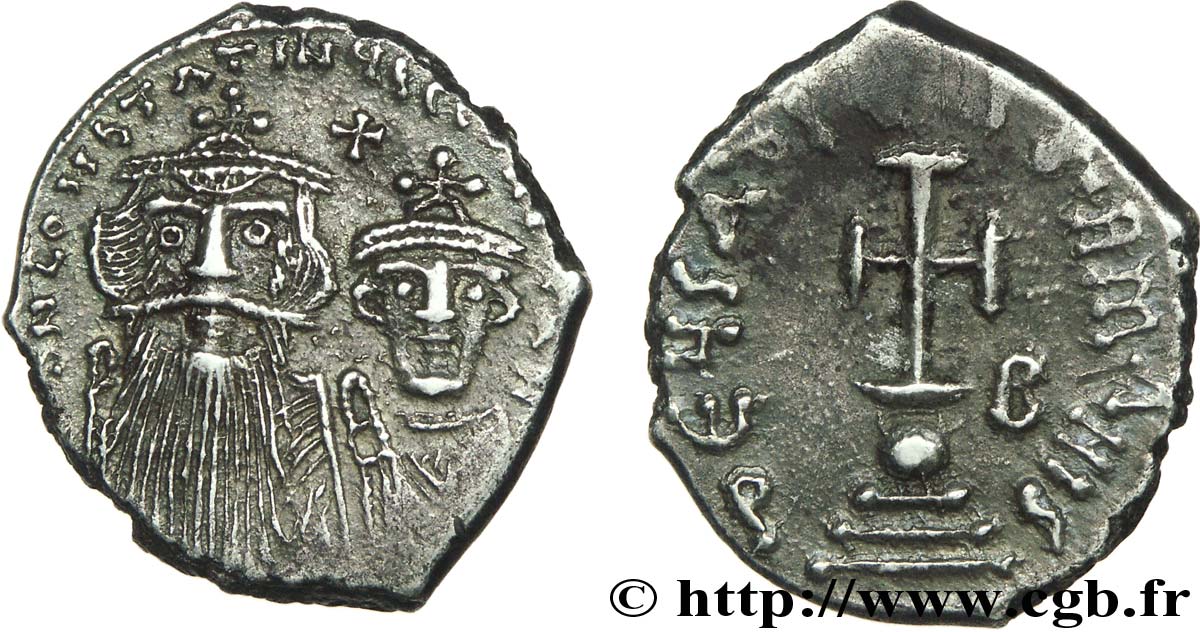
 Report a mistake
Report a mistake Print the page
Print the page Share my selection
Share my selection Ask a question
Ask a question Consign / sell
Consign / sell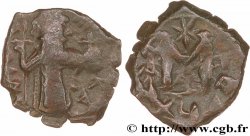
 Full data
Full data
